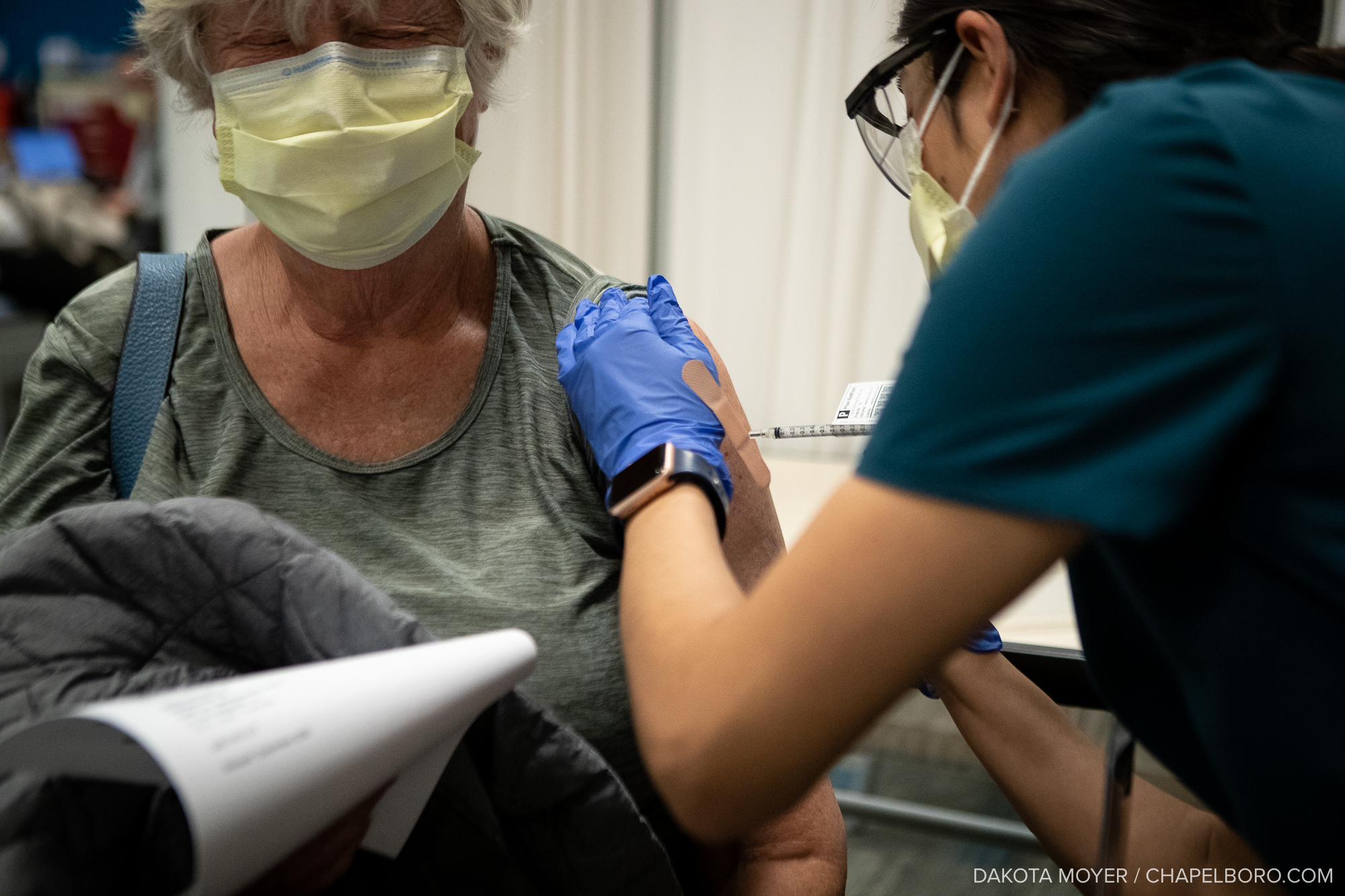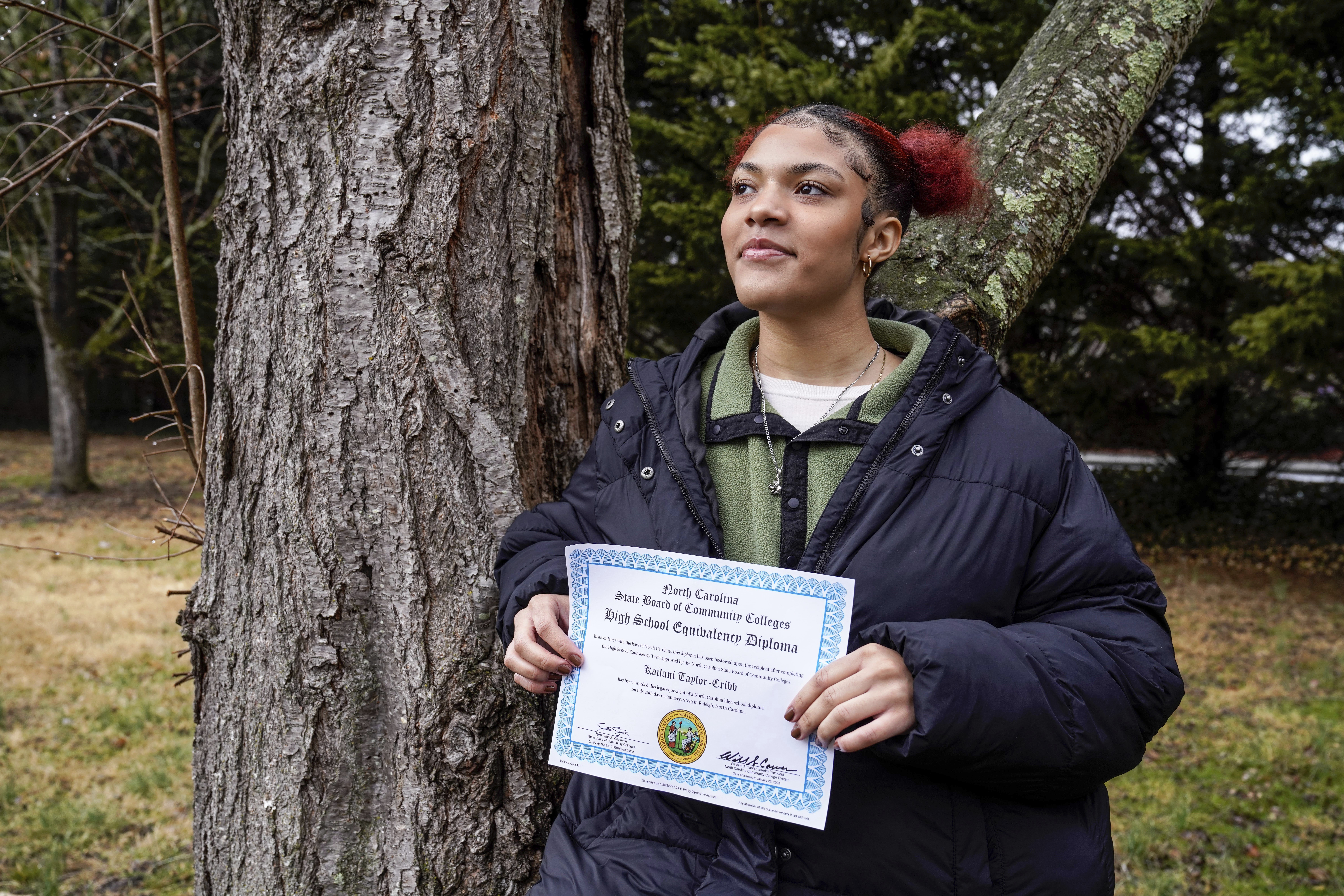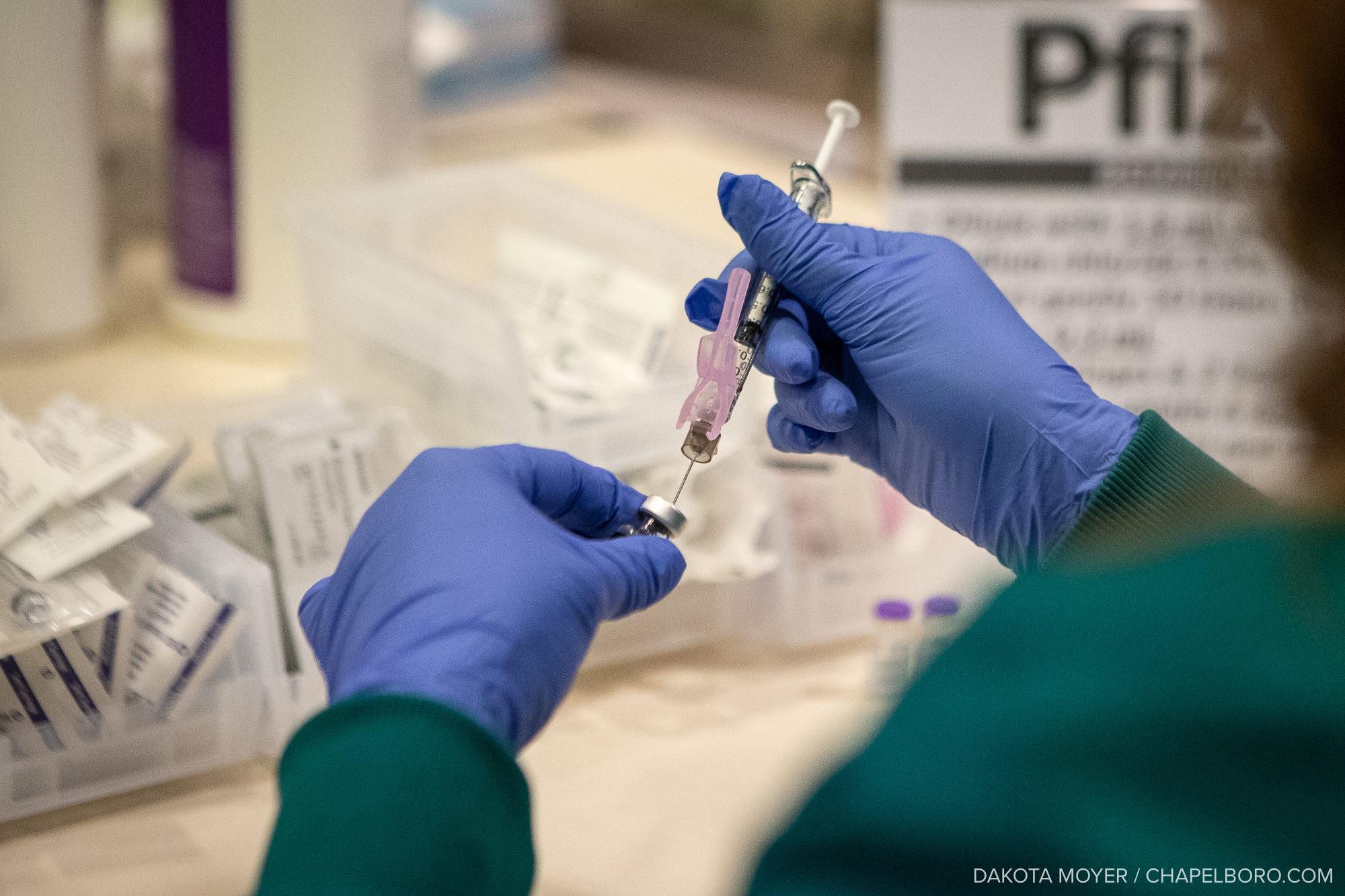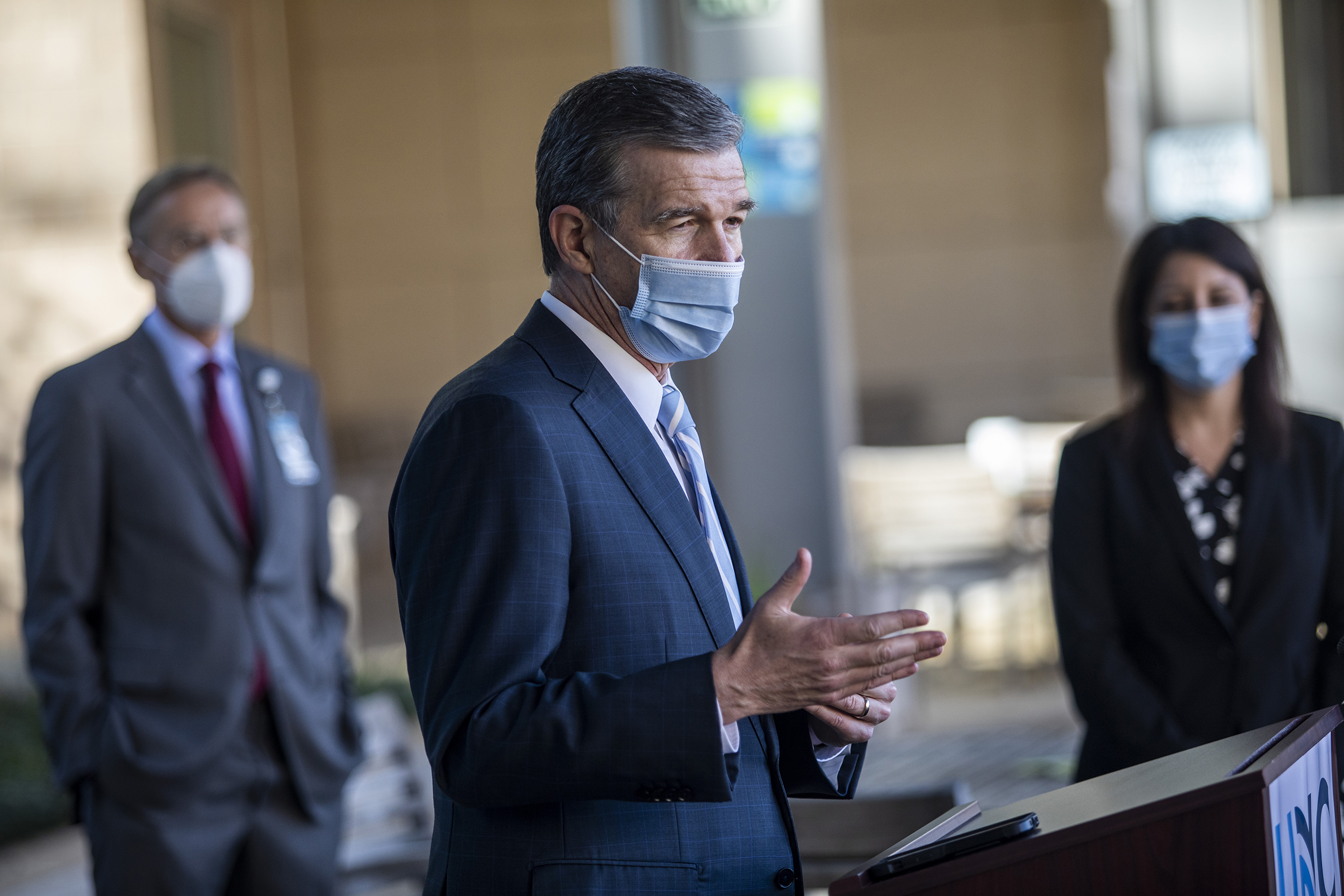It’s crowded in the back of the ambulance.
Two emergency medical technicians, the patient, the gurney — and an unseen and unwelcome passenger lurking in the air.
For EMTs Thomas Hoang and Joshua Hammond, the coronavirus is constantly close. COVID-19 has become their biggest fear during 24-hour shifts in California’s Orange County, riding with them from 911 call to 911 call, from patient to patient.
They and other EMTs, paramedics and 911 dispatchers in Southern California have been thrust into the front lines of the national epicenter of the pandemic. They are scrambling to help those in need as hospitals burst with a surge of patients after the holidays, ambulances are stuck waiting outside hospitals for hours until beds become available, oxygen tanks are in alarmingly short supply and the vaccine rollout has been slow.

Emergency medical workers Jacob Magoon, from left, Joshua Hammond and Thomas Hoang lift a patient onto a gurney in Placentia, Calif., Saturday, Jan. 9, 2021. (AP Photo/Jae C. Hong)

Emergency medical technician Thomas Hoang, 29, of Emergency Ambulance Service, loads a patient into an ambulance in Placentia, Calif., Friday, Jan. 8, 2021. (AP Photo/Jae C. Hong)

Emergency medical technician Joshua Hammond, right, of Emergency Ambulance Service, holds the hand of a patient to calm her down in Placentia, Calif., Saturday, Jan. 9, 2021. (AP Photo/Jae C. Hong)
EMTs and paramedics have always dealt with life and death — they make split-second decisions about patient care, which hospital to race to, the best and fastest way to save someone — and now they’re just a breath away from becoming the patient themselves.
They gown up, mask up and glove up, “but you can only be so safe,” Hammond said. “We don’t have the luxury of being 6 feet apart from the patient.”
Statistics on COVID-19 cases and deaths among EMTs and paramedics — especially ones employed by private companies — are hard to find. They are considered essential health care workers but rarely receive the pay and protections given to doctors and nurses.
Hammond and Hoang work for Emergency Ambulance Service Inc., a private ambulance company in Southern California. They, like so many others, have long fostered goals of becoming first responders to serve their communities.

Emergency medical technicians Joshua Hammond, left, and Thomas Hoang, of Emergency Ambulance Service, transport a COVID-19 patient to an ambulance in Placentia, Calif., Friday, Jan. 8, 2021. (AP Photo/Jae C. Hong)

Emergency medical workers Trenton Amaro, from left, Joshua Hammond, Thomas Hoang and Charles Navarro are crammed in an ambulance as they treat a patient in Placentia, Calif., Friday, Jan. 8, 2021. (AP Photo/Jae C. Hong)
Hoang is attending nursing school. Hammond is one test away from becoming a paramedic. Both were called to a life in the medical field after traumatic experiences: Hammond had to call 911 after his mother had an allergic reaction, and Hoang witnessed a young bicyclist get hit by a car.
Yet as COVID-19 infections surge and the risks increase, they wonder: Is it worth risking your life — and the lives of your loved ones at home — for a small paycheck and a dream?
“It’s really hard to justify it beyond ‘I really want to help people,’” said Hammond, 25. “Is that worth the risk?”
For now, yes.
“I do want to do my part in helping people get better, in a sense,” said Hoang, 29.
And so their day starts at 7 a.m.
Wearing masks, Hoang and Hammond clean their ambulance and equipment, wiping down every surface even if the previous crew scrubbed it already. They take no chances during their daylong shift covering the Orange County city of Placentia.

Emergency medical technicians Joshua Hammond, right, and Thomas Hoang, of Emergency Ambulance Service, sit in their ambulance after transporting a patient to an emergency room in Placentia, Calif., Friday, Jan. 8, 2021. (AP Photo/Jae C. Hong)

Emergency medical technician Joshua Hammond, 25, of Emergency Ambulance Service, watches TV while on standby for a dispatch call in Placentia, Calif., Friday, Jan. 8, 2021. (AP Photo/Jae C. Hong)

Emergency medical technician Thomas Hoang, 29, of Emergency Ambulance Service, falls asleep in a recliner while on standby for a dispatch call in Placentia, Calif., Saturday, Jan. 9, 2021. (AP Photo/Jae C. Hong)

Emergency medical technician Thomas Hoang, 29, of Emergency Ambulance Service, loads a gurney into an ambulance after transporting a patient to an emergency room in Fullerton, Calif., Saturday, Jan. 9, 2021. (AP Photo/Jae C. Hong)
The 911 calls come in with limited information: a broken bone, chest pain, difficulty breathing, stomachache, fever. Every patient is a potential carrier of the coronavirus, whether they know it or not.
Sometimes, people know they’re infected and tell 911 dispatchers before the EMTs arrive. Other times, the symptoms themselves — fever, shortness of breath — signal a possible case. But Hammond remembers one woman, suffering from hip pain, who didn’t tell him or his partner about her coronavirus diagnosis.
He only found out afterward, saying it reinforced the importance of treating every patient as if they have tested positive.
“That was definitely a call where we learned a lot,” Hammond said.

A patient is surrounded by emergency medical workers Joshua Hammond, from left, Trenton Amaro, Thomas Hoang and Kim Rose while being treated in her apartment in Placentia, Calif., Saturday, Jan. 9, 2021. (AP Photo/Jae C. Hong)
Unlike doctors and nurses, first responders must go inside homes. They walk into hot zones where everyone in a household is sick, where the virus is in the air. They lift immobile patients onto gurneys, their masked faces just inches apart.
They race to hospitals already overwhelmed with sick people, sometimes only to wait hours outside before their patient can be admitted. And then they do it all again when the next 911 call comes in.
“We don’t know the end result,” Hoang said. “We only know the beginning to the hospital.”
Then there are those who direct the EMTs where to go. In Los Angeles County, 20 miles (32 kilometers) northwest from Hoang and Hammond, three young women stood before six screens apiece recently, talking into headsets with clear, clipped voices, marshaling other ambulance crews around a territory stretching from the mountains to the sea.

Dispatcher Ashley Cortez responds to a call in Care Ambulance Service’s communication center in Santa Fe Springs, Calif., Saturday, Jan. 9, 2021. (AP Photo/Jae C. Hong)

Dispatch Supervisor Eileen Cegarra works in Care Ambulance Service’s communication center in Santa Fe Springs, Calif., Saturday, Jan. 9, 2021. (AP Photo/Jae C. Hong)

Dispatch Supervisor Erick Aguilar stands in front of a screen showing the map of Los Angeles County while working in Care Ambulance Service’s communication center in Santa Fe Springs, Calif., Saturday, Jan. 9, 2021. (AP Photo/Jae C. Hong)
Ashley Cortez, Adreanna Moreno and Jaime Hopper work 12-hour shifts as dispatchers for Care Ambulance Service Inc. If the EMTs are the front lines, these women are the scouts.
They play chess with ambulances all day. When one gets stuck at a hospital for eight, 10 or 12 hours, the dispatchers must reposition the others to cover its area. When an EMT reports a positive COVID-19 test, the dispatchers must find a way to cover the ambulance’s calls if the whole crew must quarantine. When one household has multiple coronavirus patients requiring two ambulances, the dispatchers have to plug the hole.
Their greatest fear is what’s called a “level zero” — when there are no ambulances left to send to an emergency. In Los Angeles County, one of the nation’s hardest-hit counties during the pandemic, the fear becomes a regular reality.
For Moreno, 28, the anxiety begins the night before her shift.

Emergency medical technician Thomas Hoang, 29, of Emergency Ambulance Service, pushes a gurney into an emergency room to drop off a COVID-19 patient in Placentia, Calif., Friday, Jan. 8, 2021. (AP Photo/Jae C. Hong)
“I lay there and know I’m going to come in, and I know I’m going to have no units to run these calls,” she said.
On Christmas weekend, Cortez watched as call after call piled up on her screen — with no ambulances available. Typically, it takes 30 seconds to send one out. That weekend, it took up to 15 minutes. And this was even before ambulances started languishing outside hospitals for hours.
“I was just in disbelief,” said Cortez, 26.
There’s not much more the dispatchers can do. They watch those screens. They listen to radio chatter. They rearrange the crews to cover the most territory possible. And they wonder what fresh horror awaits in a virus-ravaged world where the dangers are too many and the ambulances are too few.
“What if something happens to my daughter,” Cortez said, “and there was nobody to send for her?”
Related Stories
‹

5 Things We Know and Still Don’t Know About COVID, 5 Years After It AppearedCOVID-19 is less deadly than it was in the pandemic’s early days. But the virus is evolving, meaning scientists must track it closely.

Nearly 10,000 Died From COVID-19 Last Month, Fueled by Holiday Gatherings and New Variant, WHO SaysThe head of the U.N. health agency said holiday gatherings and global spread led to increased transmission of COVID-19 last month.

Biden Ends COVID National Emergency After Congress ActsWritten by ZEKE MILLER The U.S. national emergency to respond to the COVID-19 pandemic ended Monday as President Joe Biden signed a bipartisan congressional resolution to bring it to a close after three years — weeks before it was set to expire alongside a separate public health emergency. The national emergency allowed the government to take sweeping […]

COVID-19 Conspiracies Soar After Latest Report on OriginWritten by DAVID KLEPPER COVID-19′s origins remain hazy. Three years after the start of the pandemic, it’s still unclear whether the coronavirus that causes the disease leaked from a lab or spread to humans from an animal. This much is known: When it comes to COVID-19 misinformation, any new report on the virus’ origin quickly triggers […]

Thousands of Students Are Missing From School. Where Did They Go?Written by BIANCA VÁZQUEZ TONESS and SHARON LURYE She’d be a senior right now, preparing for graduation in a few months, probably leading her school’s modern dance troupe and taking art classes. Instead, Kailani Taylor-Cribb hasn’t taken a single class in what used to be her high school since the height of the coronavirus pandemic. […]

National Expert: Getting Kids Vaccinated Before School is 'Best Thing to Do'Younger children are the age demographic that had the longest waits for COVID-19 vaccines to be approved. So far, their vaccination rates reflect that gap of time, but urgency around getting those initial doses has slowed to a crawl. With a new school year being just around the corner, though, federal health officials are saying […]

UNC to Automatically Register Employees for the COVID-19 VaccineWith the news that all frontline essential workers are eligible for the COVID-19 vaccine beginning on Wednesday, March 3, UNC is communicating plans on how it will affect university employees. Group 3 includes “college and university instructors and support staff” as well as other front-line essential workers and researchers, as defined by the North Carolina Department of Health […]

North Carolina's COVID-19 Restrictions Ease on Friday: Here's What You Need to KnowGovernor Roy Cooper announced Executive Order 195 — which eases some pandemic restrictions and lifts North Carolina’s modified stay at home order — earlier this week. “Given the significant and sustained improvement in our COVID-19 metrics,” said Cooper, “today I am announcing that we will ease but not lift restrictions in several areas with a new […]
![]()
Not To Be Sniffed At: Agony of Post-COVID-19 Loss of SmellThe doctor slid a miniature camera into the patient’s right nostril, making her whole nose glow red with its bright miniature light. “Tickles a bit, eh?” he asked as he rummaged around her nasal passages, the discomfort causing tears to well in her eyes and roll down her cheeks. The patient, Gabriella Forgione, wasn’t complaining. […]
![]()
In Ambulances, an Unseen, Unwelcome Passenger: COVID-19It’s crowded in the back of the ambulance. Two emergency medical technicians, the patient, the gurney — and an unseen and unwelcome passenger lurking in the air. For EMTs Thomas Hoang and Joshua Hammond, the coronavirus is constantly close. COVID-19 has become their biggest fear during 24-hour shifts in California’s Orange County, riding with them […]
›























